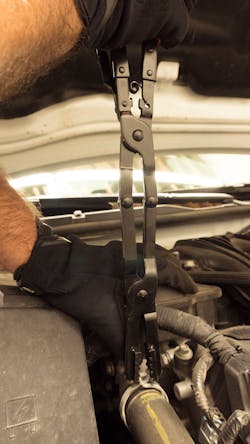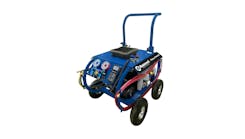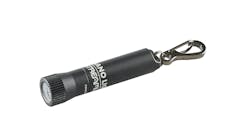Every technician has been in a situation where they don’t have the right tool for the job at hand. But the work must get done, so oftentimes a tool is used for an application it is not designed for. Specialty hand tools have risen throughout the industry as the ‘problem solvers,’ developed to ease pain points technicians are experiencing. Whether a redevelopment of an existing tool or something innovative and new created for a particular task, specialty hand tools play a big role in saving time, preventing damage to parts and/or tools, and getting the job done right.
KNIPEX released the Super Knips, No. 7803125, cutting pliers designed for applications in the electronics market such as cutting fine components off circuit boards. With the electronics market not being as prevalent in the United States, the tool was used otherwise.
“What was happening was people were starting to adapt this tool to a lot of other applications. The number one application for this tool [in automotive servicing] is to cut off cable ties, also known as zip ties,” says Peter Grable, product manager, KNIPEX. “Most technicians will use a pair of diagonal cutters, alignment pliers, needle nose, whatever cutting tool they have in their hand. Does it do the job? Yes, absolutely. It will cut off the cable tie. But it does not cut it flush.”
The problem was that using various cutting tools resulted in partially cut ties that would leave sharp edges and pieces of the tie behind. Should a technician reach their hand or arm into the area of service, they could get cut or scratched by the poorly cut ties. Furthermore, partially cut ties can rub against the cables and wires that they were securing, resulting in damage and yielding more issues to be dealt with.
KNIPEX took this information into consideration after speaking with those using the tool, understanding the shortcomings in this new-found application, and redeveloped a second iteration of the Super Knips.
“We made [the new Super Knips] about a half-inch longer, we made the blade a little longer, and we made the material toward the cutting head a little bit thicker,” Grable says.
This resulted in the KNIPEX Super Knips, No. 7803140.
“Technicians find a way to use just about anything [to get the job done],” says Eddie Lisle, sales manager, Lisle Corporation. “Specialty tools present an opportunity for us to make a tool specifically for that purpose. Specialty tools have always been our niche … We want to come out with those ‘problem solvers’ for people. Everyone’s time is valuable, so if we can come up with a tool that solves that problem and saves people time, that’s what we want to do.”
Lisle recently launched two specialty tools: the Long Reach Hose Clamp Pliers, No. 17000 and the 35-Degree Long Reach Universal Hose Clamp Pliers, No. 17370.
The 17000 pliers were launched first, designed to make hose clamp removal easier. Since many hose clamps can be deep within the service area and may be hard to reach, Lisle designed the tool to be 17” long. The tips have a cross-cut pattern to provide a secure grip on different styles of clamps, and the pliers are able to be locked in place with pressure applied to the clamp. This allows the technician to open the hose clamp and have two free hands available to continue servicing the vehicle without having to hold the clamp open with one hand and try to work with the other.
After the 17000 was launched, Lisle received positive feedback from users, but some technicians mentioned it would be handy if the tip of the pliers was angled for clamps that are tucked around a corner or are inaccessible from a straight angle. Lisle went back to work and developed the 17370 model, which has a 35-degree angle at the tip of the pliers.
Some specialty tools are created as redevelopments of existing tools, while others are invented as unique solutions to particular problems. Mueller Kueps created specialty tools to aid in brake line servicing.
When brake line comes into the shop, it is normally in a roll or coil and a technician will need to straighten it out by hand before it can be installed in a vehicle. This process can be inaccurate, and the line will never be perfectly straight.
To help resolve this issue, Mueller Kueps developed the Brake Line Straightener, No. 462040, which is designed to take the coiled brake line and make it straight. The line is fed through one side, and the 16 internal ball-bearings and wheels straighten it as it comes out the other end.
Once the line is straightened and ready to be cut, the Mueller Kueps Brake Line Cutter, No. 462002, is a specialty hand tool designed specifically to cut brake lines. What makes this brake line cutter stand out is the self-adjusting blade mechanism.
“When you wanted to cut brake line before this tool, you’d go around the brake line and then have to tighten the cutter and go around again,” says Andre van Lagen, national sales manager, North America, Mueller Kueps. “[The 462002] is self-adjusting. You don’t have to do anything but ratchet around the brake line and it cuts.”
Conclusion
Specialty tools are important to the automotive service industry, and their development is largely a result of the relationship between tool manufacturers and technicians. The communication of pain points, suggestions for alterations, and expressions of needs from end-users to manufacturers resonate throughout the industry and result in the continued development of specialty tools. As the vehicles being serviced change, so too will the tools used to work on them, and at the forefront of that progression will be specialty hand tools.



